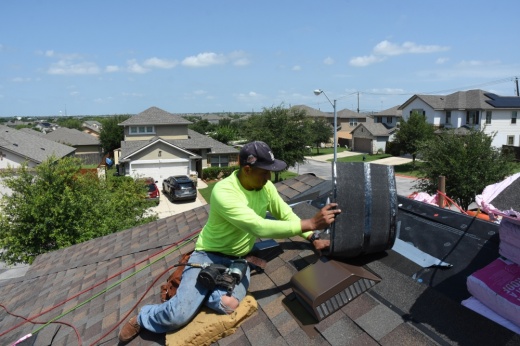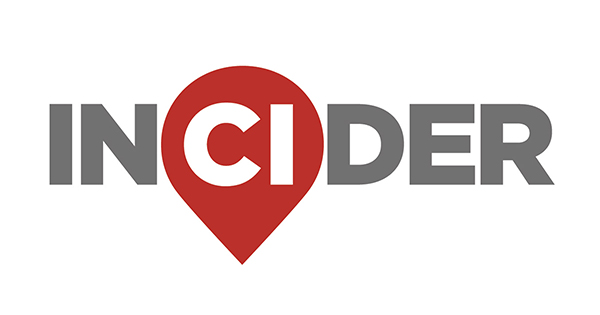He said he switched insurance companies in 2025 after his previous insurer doubled his premium from about $3,000 per year to over $6,000 per year in 2024.
“There’s significant hail [damage] to the roof, to the windows, garage door, the fence, [and] many personal things on the property,” said Damon Chacon, a contractor with JWC General Contracting who assessed the damage on Alexander’s house with an insurance agent.
Alexander’s experience mirrors what many homeowners have been experiencing.
In 2023, Texas hit an all-time high for extreme weather events, according to the Texas Coalition for Affordable Insurance Solutions. There were 15 severe storms that year, amounting to between $20 billion and $50 billion in disaster costs.
The big picture
In the 1980s, there was an average of 82 days nationally between those events, according to the TCAIS. Nationally, from 2017 to 2021, there was an average of 18 days between billion-dollar weather events. In that five-year time frame, Texas experienced 44 severe weather events, totaling $200 billion to $300 billion in costs.
Alexander noted the hike in his insurance rate came after an influx of people in his neighborhood got their roofs replaced, and he’s had a harder time getting claims approved.
Extreme weather events often damage homes, and roofs often bear the brunt of the impact.
“I’ve seen a lot more denials and people’s rates going up,” Chacon said, noting that the change in the insurance landscape seems to have followed the increased weather events.
“You have to be a lot more thorough,” he said. “There’s been a shift.”
Many industry professionals agree the insurance landscape for Texas homeowners is changing. They often mention the increasing frequency of weather events as a main factor in the shift.
“The weather events are a lot larger now,” said Will Peckham, an insurance adviser with Watkins Insurance Group.
He said the frequency of hail, wind and wildfire events in the state all contribute to how insurance carriers calculate premiums for customers.
Coverage plans are also becoming more strict, he said. People are seeing higher deductibles become normal due to the difficult nature of providing home insurance in Texas.
“They can’t make a profit. Their business is to make a profit just like any other business,” Peckham said.
Zooming in
While the roof on a house is important when securing insurance, shortened lifespans frequent weather events and Texas’ climate are making it more difficult to get them insured.
“That’s within the last two to three years that insurance companies are really being staunch on the age of a roof versus condition,” said Matthew Werling, owner of Regenesis Roofing and Restoration in Cedar Park.
Newer roofs can result in lower premiums, as they will protect a home longer and more effectively than older roofs, Peckham said.
However, there are mounting difficulties for homeowners to consider when buying a new roof.
The price roofers are paying for materials has roughly doubled in the last 10 years, Werling said.
He also noted the climate in Texas makes it hard to put an accurate lifespan on a roof. Shingles that are expected to last 30 years typically last 15-24 years in Texas, and shingles that are rated for 25 years typically last about 12-17 years, he said.
“Things are definitely changing in our area based on weather patterns,” Werling said, noting that there are areas around Austin that are beginning to see hail every year.
Along with severe weather, high repair and construction costs as well as legal complications from fraud and inflated claims have contributed to a rise in home insurance, said Heather Grissom, owner of Grissom Insurance in Cedar Park. Grissom said her agency is starting to see home insurance rates stabilize due to insurance companies catching up with the rise in claims.
Insurance companies will use combined loss ratios to determine how to reimburse homeowners. Combined loss ratios calculate losses paid out to claims with expenses for agent commissions, overhead, administrative costs and more for a fuller depiction of profitability in the state. A combined loss ratio of 100% is the break even point, and a ratio above 100% shows an overall loss.
The impact
From 2022 to 2023, Texas homeowners saw a more than 28% average increase in home insurance rates, nearly double the national average of 15.5% for that time period. The increase in rates experienced by Texans was the highest in the country, according to the TCAIS.
The price increases came after Texas insurance companies saw losses from 2018 to 2022, paying out an average of $1.02 for every $1 paid to the companies by policy holders, according to the TCAIS.
Peckham said insurers conceal their considerations in determining rates, but it’s common knowledge that the age of a roof and area a person lives in are factors.
Ultimately, Peckham said, navigating the current home insurance landscape and ensuring a person has the right coverage for them comes down to a laborious amount of reading their contract.
Peckham recommends people read policies closely to understand how much they’ll have to pay.





